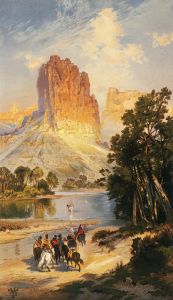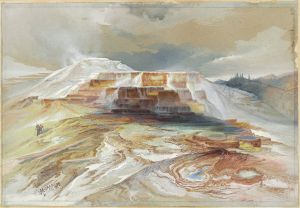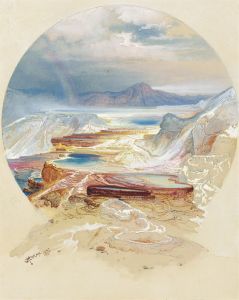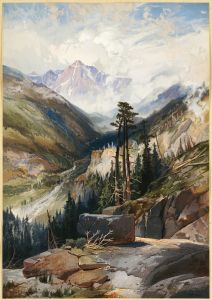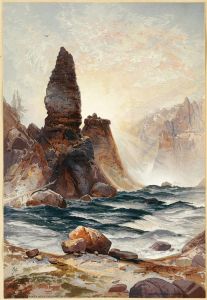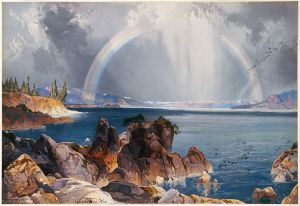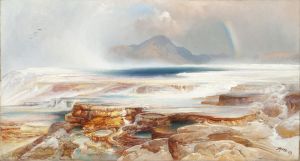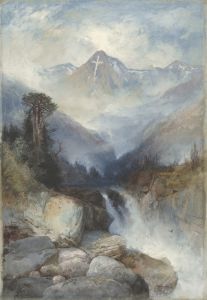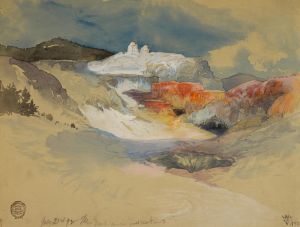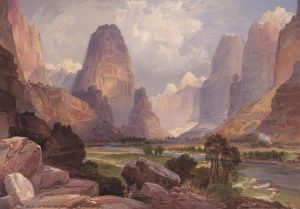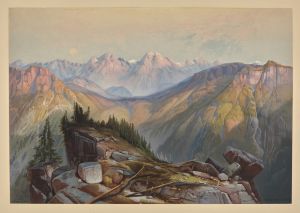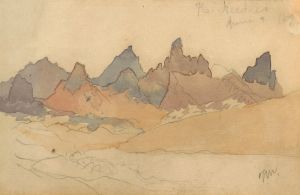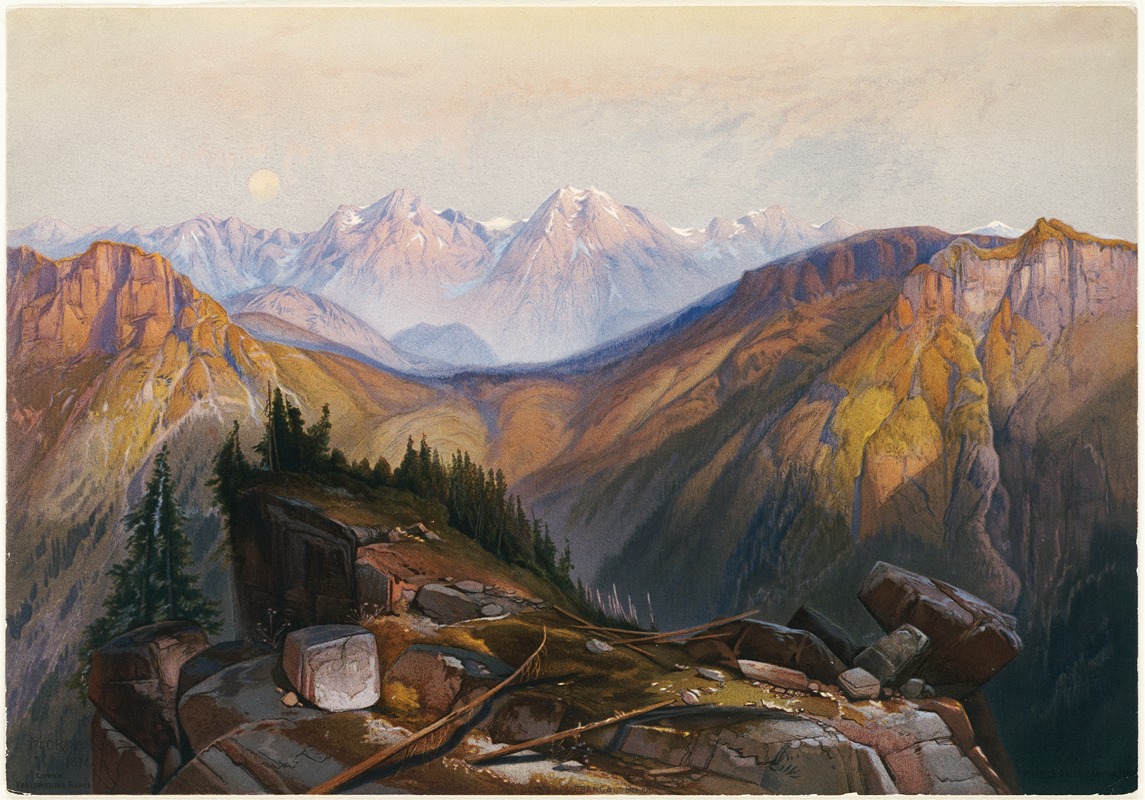
Lower Yellowstone Range
A hand-painted replica of Thomas Moran’s masterpiece Lower Yellowstone Range, meticulously crafted by professional artists to capture the true essence of the original. Each piece is created with museum-quality canvas and rare mineral pigments, carefully painted by experienced artists with delicate brushstrokes and rich, layered colors to perfectly recreate the texture of the original artwork. Unlike machine-printed reproductions, this hand-painted version brings the painting to life, infused with the artist’s emotions and skill in every stroke. Whether for personal collection or home decoration, it instantly elevates the artistic atmosphere of any space.
Thomas Moran's "Lower Yellowstone Range" is a notable work by the American painter renowned for his depictions of the American West. Moran, born in 1837 in Bolton, England, immigrated to the United States with his family as a child. He became one of the most prominent landscape painters of the 19th century, particularly known for his role in documenting the Western frontier.
Moran's artistic journey was significantly influenced by his travels to the Yellowstone region. In 1871, he joined the Hayden Geological Survey of 1871, led by Ferdinand V. Hayden, which was the first federally funded exploration of the Yellowstone area. Moran's participation in this expedition was pivotal not only for his career but also for the conservation movement in the United States. His sketches and paintings from this trip played a crucial role in convincing Congress to establish Yellowstone as the first national park in 1872.
"Lower Yellowstone Range" is one of the many works Moran created that captures the grandeur and beauty of the Yellowstone region. His paintings are characterized by their vivid colors, dramatic compositions, and meticulous attention to detail, which together convey the awe-inspiring landscapes of the American West. Moran's work is often associated with the Hudson River School, a mid-19th century American art movement embodied by a group of landscape painters whose aesthetic vision was influenced by romanticism.
Moran's technique involved the use of luminous colors and a keen sense of atmospheric effects, which he employed to depict the vastness and majesty of the natural world. His paintings often feature sweeping vistas, towering mountains, and expansive skies, elements that are likely present in "Lower Yellowstone Range." Moran's ability to capture the sublime beauty of the landscape helped to shape the perception of the American West as a place of untamed beauty and grandeur.
The impact of Moran's work extends beyond the art world. His paintings were instrumental in the early conservation movement in the United States, as they brought the beauty of the Western landscapes to the attention of the public and policymakers. The visual documentation provided by Moran and photographers like William Henry Jackson was crucial in the decision to preserve these lands for future generations.
Thomas Moran continued to paint the American landscape throughout his life, and his works remain celebrated for their contribution to American art and environmental conservation. His legacy is preserved in numerous collections, including those of the Smithsonian American Art Museum and the National Gallery of Art, where his works continue to inspire appreciation for the natural beauty of the United States.
While specific details about "Lower Yellowstone Range" may not be as widely documented as some of Moran's other works, it undoubtedly reflects his mastery in capturing the essence of the Yellowstone region and his enduring influence on both art and conservation.





